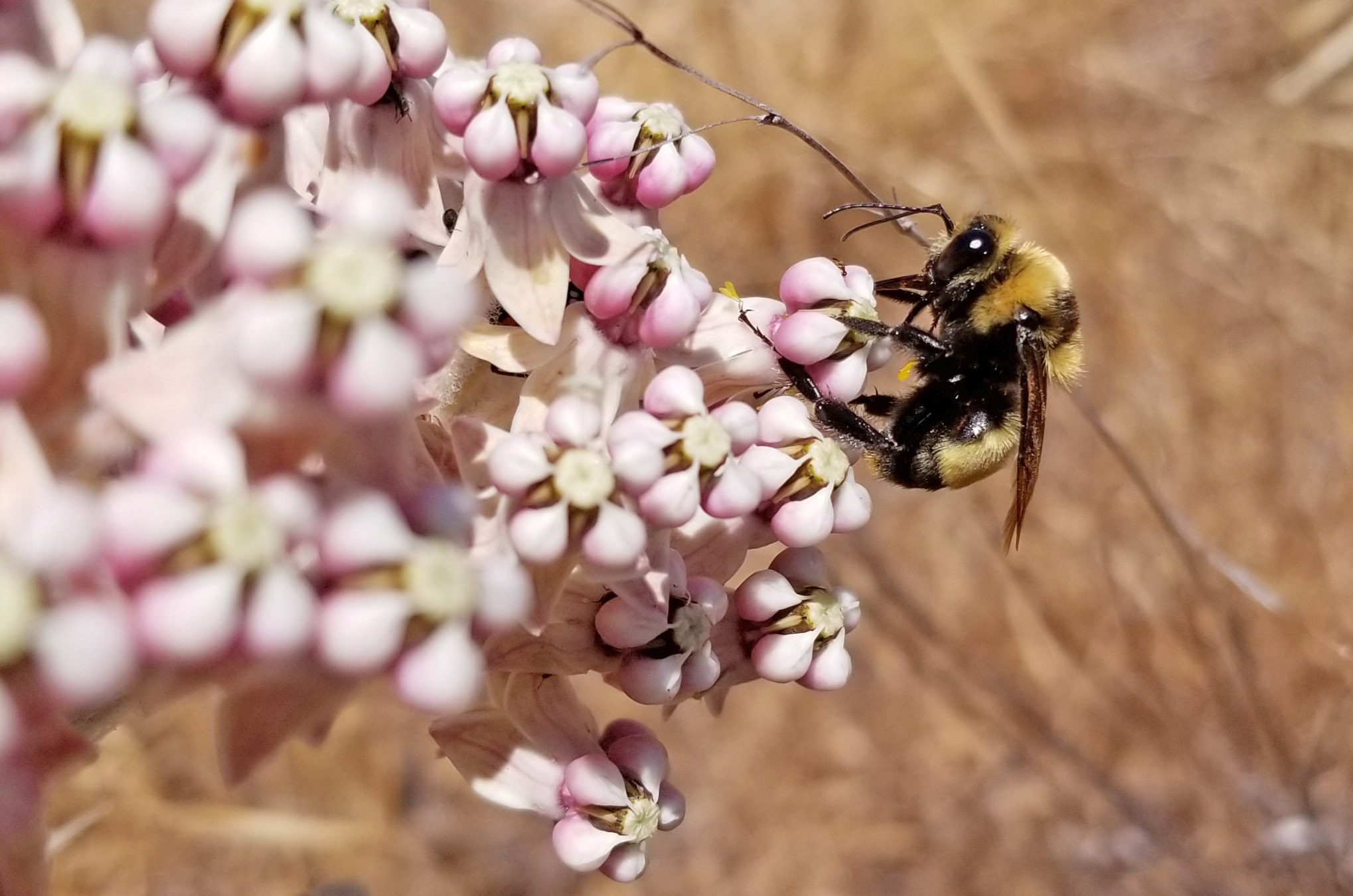Today I share some unfortunate news. The Superior Court of Sacramento County recently sided with agricultural groups and determined that the State of California does not have the legal authority to protect insects under the California Endangered Species Act.
This story began more than two years ago when the Xerces Society, Defenders of Wildlife, and the Center for Food Safety filed a petition with the California Department of Fish and Wildlife (CDFW) asking the state to grant protection under the California Endangered Species Act (CESA) to four bumble bees—western, Suckley cuckoo, Crotch’s, and Franklin’s—that are at risk of going extinct. Protection under CESA would prevent these four species from going extinct, and protect the diversity of wild bees that pollinate crops throughout the Central Valley. They are also essential pollinators of wildflowers from the mountains of the Sierra Nevada to the beaches of the Pacific Ocean. This petition was strongly supported by bee researchers throughout the world.

Crotch’s bumble bee (Bombus crotchii) on milkweed. (Photo: Xerces Society / Stephanie McKnight.)
These bumble bees used to be far more common and have suffered significant declines over the past twenty-five years. Franklin’s bumble bee only occurs in an area in northern California and southern Oregon that is about 60 miles wide; it hasn’t been seen since 2006, and was recently proposed to be listed under the federal Endangered Species Act. Crotch’s bumble bee historically occurred from the northern Central Valley to Baja Mexico, but has been lost from 80% of its historic range and now primarily persists only in coastal southern California habitats, though it also survives in a few areas north and southwest of Sacramento. The western bumble bee has also been lost primarily from Pacific coastal areas of its historic range and the Suckley cuckoo bumble bee is now considered to be Critically Endangered by the International Union for the Conservation of Nature.
In June of 2019, the Fish and Game Commission designated these four bumble bees as candidate species under CESA, granting them the same level of protection that species listed as endangered receive. By early September, a lawsuit was filed against the Commission and CDFW by lawyers representing several large-scale agricultural groups, including the Almond Alliance of California, California Association of Pest Control Advisers, California Citrus Mutual, California Cotton Ginners and Growers Association, California Farm Bureau Federation, Western Agricultural Processors Association, and the Western Growers Association. The Xerces Society, along with our conservation partners (Defenders of Wildlife and Center for Food Safety), joined the lawsuit as intervenors on behalf of the state, represented by Stanford Law School’s Mills Legal Clinic. Many of the commodity groups whose crops benefit from pollination by wild bees joined this lawsuit. To establish standing, these groups suggested that listing these four bumble bees under CESA would interfere with farming—however, the legislature has broadly exempted agriculture from liability associated with CESA.
The petitioners argued that the state of California did not have the legal authority to protect insects under CESA when they designated these four bumble bees as candidate species. They cited section 2062 of the Fish and Game Code, which states that an “ ‘endangered species’ means a native species or subspecies of a bird, mammal, fish, amphibian, reptile, or plant which is in serious danger of becoming extinct throughout all or a significant portion, of its range”. However, the state legislature defined “fish” very broadly in the Fish and Game Code, stating in section 45 that “ ‘Fish’ means a wild fish, mollusk, crustacean, invertebrate, amphibian, or part, spawn, or ovum of any of those animals.” Since bumble bees are unquestionably invertebrates, the State of California, as well as the Xerces Society and our conservation allies (the intervenors), argued that the state has the authority to protect bumble bees under CESA. However, Judge Arguelles concluded that the legislature meant only marine invertebrates when it included the term invertebrates in the definition of fish, stating in the ruling that “the word ‘invertebrates’ as it appears in Section 45’s definition of “fish” clearly denotes invertebrates connected to a marine habitat, not insects such as bumble bees.”

Western bumble bee (Bombus occidentalis occidentalis) on aster. (Photo: Xerces Society / Rich Hatfield.)
As a biologist who works entirely on the conservation of invertebrate species, I found this interpretation surprising. In the definition of fish, the state legislature did not qualify the type of invertebrates to be included (such as marine, freshwater, terrestrial), so I have long understood that any invertebrate in danger of going extinct would be eligible for protection under CESA. The legislature also included mollusks, crustaceans, and amphibians within its definition of fish. Invertebrates, mollusks, crustaceans, and amphibians contain many species with no association to marine habitats. Many mollusk species, in addition to many invertebrate species, live their entire lives on land. Indeed, three non-marine invertebrate species are already protected under CESA: the trinity bristle snail (a terrestrial species), and the Shasta crayfish and California freshwater shrimp, both of which live in freshwater habitats. None of these previously CESA-listed invertebrate species have any connection to marine environments.
About 80% of the world’s animals are insects. If this ruling stands, the California Endangered Species Act will effectively exclude a huge proportion of animal diversity from a law that was enacted to broadly protect the state’s wildlife. Pollinators, among other insects, are essential to life on this planet, and should be conserved in their own right—but also for the services that they provide. Numerous studies show that conserving a diverse suite of pollinators is necessary for the sustainability of our food supply. Though we are disappointed in the Court’s decision, we will continue our work to understand and conserve the most endangered wild pollinators in California and beyond.
Further Reading
Read the CESA petition
Learn more about how to protect bumble bees.
Quick tips on how you can support the life cycle of bumble bees: Bumble Bee Conservation (brochure)
Detailed guidance on Conserving Bumble Bees by creating and managing habitat.




